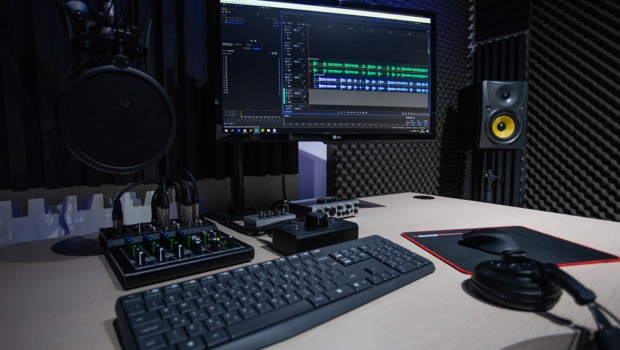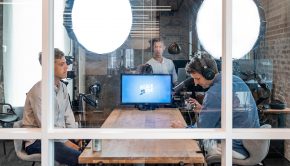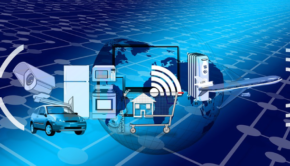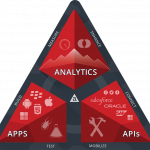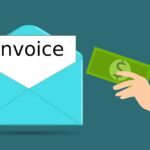How to Build a Budget-Friendly Podcast Studio at Home
If you are looking to start a podcast, the first thing you need is a place to record it. You could go out and rent a studio, but that can get expensive quickly. Plus, you might not need all of the features a professional studio offers.
In this article, we will show you how to build your budget-friendly podcast studio at home. We will cover everything from what equipment you need to where to put it in your house. Let’s get started!
What Type of Podcast are you Recording?
The type of podcast you are recording will dictate the equipment you need.
If you are doing a voice-only podcast, you will need a microphone and possibly headphones. But if you are recording a music podcast, you will need an audio interface, microphones, and studio monitors.
So before you start shopping for equipment, decide what type of podcast you will be recording.
The Perfect Podcast Studio Equipment List
When it comes to creating a podcast studio on a budget, there are certain essential pieces of equipment and others that are optional. Here is a list of the essentials:
Computer
Any computer that can run recording software will work for podcasting. If you plan on doing any type of post-production editing, however, you’ll want a machine with more power. Also, make sure your computer has a good microphone input.
Digital Audio Workspace/Audio Interface Combo
One way to save money on your home podcast studio is by using a digital audio workspace (DAW) and an audio interface combo. A DAW is a software program that allows you to record, edit, and mix your podcast episodes. An audio interface is a device that connects your microphone and headphones to your computer so you can hear yourself and your guests during recording.
By choosing a DAW and audio interface combo, you can save money on both the software program and the hardware device. Plus, many audio interfaces come with built-in mic preamps, which means you don’t need to purchase a separate preamp for your microphone. This is a great option if you’re just starting and don’t want to invest a lot of money into your home podcast studio.
Some popular DAW/audio interface combos include the Avid Pro Tools First software with the Focusrite Scarlett Solo audio interface or the Apple Logic Pro X software with the Apogee Duet audio interface. Both of these options are great for beginner podcasters, and they offer a lot of features that will help you produce high-quality episodes.
Microphone
One of the most important pieces of equipment for any podcaster is a quality microphone. A good mic will capture your voice and sound clear to listeners. There are a variety of microphones available on the market, ranging from affordable options to more expensive models.
There are a few different types of microphones to consider when building your budget-friendly studio:
- Dynamic microphones
These mics are typically less expensive than other types of mics and are ideal for capturing loud sounds. They’re also durable, making them a good option for podcasters who travel often.
- Condenser microphones
These mics are more sensitive than dynamic microphones and produce higher-quality audio. However, they also tend to be more expensive.
- USB microphones
These mics plug directly into your computer and are a good option for beginner podcasters. They’re typically less expensive than other types of microphones, and many come with built-in editing software.
When choosing a microphone, it’s important to consider your budget and what type of audio you want to produce. If you’re just starting, a USB microphone is a good option to consider.

Audio Interface
When it comes to audio interfaces, you don’t need to spend a lot of money to get a quality product. Many affordable audio interfaces on the market will do the job just fine.
When shopping for an audio interface, you’ll want to consider how many inputs and outputs it has. For example, if you plan to record vocals and guitar simultaneously, you’ll need an audio interface with two XLR inputs.
Another important factor to consider is the sample rate and bit depth of the audio interface. The higher the sample rate and bit depth, the better the quality of the recordings will be. However, higher-quality recordings also require more computing power.
If you’re on a tight budget, you may want to consider an audio interface that offers lower sample rates and bit depths.
Audio Mixers
Audio mixers are an essential part of any podcast studio. They allow you to control the levels of each track, which is important for ensuring that your podcast sounds cohesive and professional.
When choosing an audio mixer, you’ll want to consider the number of channels it offers. Most mixers have anywhere from two to sixteen channels, which will be more than enough for most podcasts.
Another important factor to consider is the quality of the mixer’s preamps. Preamps are responsible for amplifying and shaping the sound of your tracks, so you’ll want to make sure that they’re of good quality.
Finally, you’ll also want to consider the mixer’s built-in effects. Many mixers come with a variety of effects, such as delay and reverb, that can add extra depth and dimension to your podcast. Also think about foot control pedals, which can add a third hand when you need it.
Headphones
When choosing headphones, there are a few things to consider: the type of headphone, the impedance, and the sensitivity.
The type of headphones will determine which microphone you need. If you’re using earbuds or in-ear monitors, then you’ll need a lavalier microphone. If you’re using over-the-ear headphones, then you’ll need a dynamic microphone.
The impedance of the headphones determines how much power the microphone needs to send to them. The higher the impedance, the more power the microphone will need. This is something to consider if you’re using a battery-powered microphone.
The sensitivity of the headphones determines how loud they are. The higher the sensitivity, the louder they will be. This is something to consider if you’re using a microphone with low sensitivity.
For podcasts, a good option is headphones with an impedance of 32 ohms or higher and a sensitivity of at least 98 dB.

Cables
One more important thing you’ll need for your podcast studio is cables. You’ll want to make sure you have plenty of microphone cables, XLR cables, and headphone cables.
Another option is to buy a cable kit, which will include all of the cables you need for your studio. This can be a great option if you’re not sure what type of cables you’ll need.
Just make sure to buy quality cables that will stand up to daily use. Cheap cables are often prone to breaking and can cause audio problems in your podcast recordings.
Mic Stand or Boom Arm?
A mic stand is a great option if you don’t have much space in your home studio. They’re typically cheaper than a boom arm, and they’re easier to set up. Just make sure the stand is sturdy enough to hold your microphone’s weight.
If you have more space in your studio, a boom arm can be a great option. They give you more flexibility when positioning your microphone, and they typically cost less than an acoustic isolation booth.
Tips for Building a Budget-Friendly Podcast Studio
When it comes to creating your podcast studio, there are a lot of things to consider. But don’t let that scare you – with a little bit of know-how and some careful planning, you can put together a great home studio on a budget.
- Start by thinking about what you need
The first step is to figure out what you need to create your podcast. Do you need a microphone, recording software, or an audio interface? Once you know what equipment you need, you can start looking for budget-friendly options.
- Shop around
Once you have an idea of what gear you need, it’s time to start shopping around. There are a lot of great deals to be found online, but don’t forget to check out your local music store as well.
- Consider renting
If you’re not sure if podcasting is for you, or if you just want to try out a few different things before you buy, consider renting some gear instead. This can be a great way to test out different microphones, software, and other equipment without spending a lot of money.
- Use what you have
If you already have a computer and some basic audio gear, you can use that to get started podcasting right away. There are a lot of great podcasting tutorials online that can help you get started.
- Start small
Don’t try to do everything at once. Start small, and add on new equipment as you need it. This will help keep your costs down, and it will also make the process a little bit more manageable.
- Keep track of your expenses
It’s important to keep track of your expenses when you’re putting together a budget-friendly podcast studio. This will help you stay on track and make sure that you don’t go over budget.
- Have fun!
This is your chance to create the perfect podcast studio for you. Have fun with it, and don’t be afraid to experiment.
Conclusion
Podcast studio equipment can be expensive, but it’s possible to create a high-quality recording space on a budget. By using simple materials and careful planning, you can build a studio that meets your specific needs and fits within your budget.
Also, don’t forget to factor in the cost of ongoing maintenance and updates. A well-maintained studio will last longer and produce better recordings.

